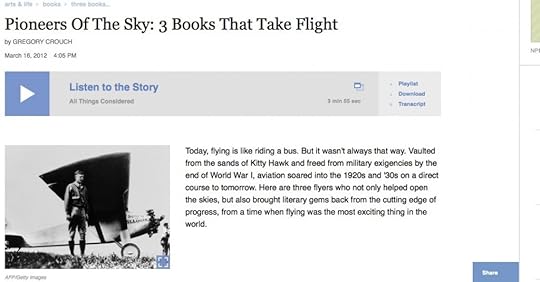Gregory Crouch's Blog, page 26
January 31, 2013
Jim Donini in Patagonia and Alaska
From the Enduring Patagonia years, here’s a run of pictures of one of the best friends and climbing partners I’ve ever had. (Still have, on both counts, thank God, which is no small accomplishment, from several perspectives.) Damn, we’ve had some fun together, and, astonishingly, the old reprobate is still grinding, climbing hard on the eve of his 70th birthday.
That is not a misprint.
Jim always was a hell of a lot of fun to write about; check out Enduring Patagonia if you haven’t read it — Jim’s one of the main characters in it.
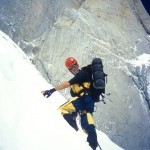
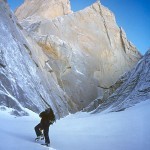
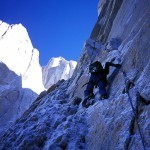
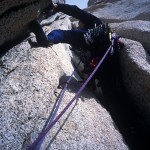
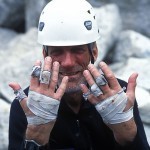
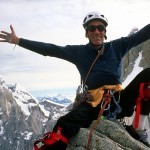
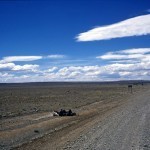
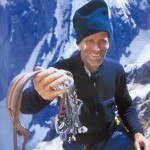

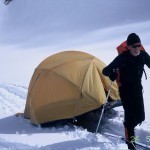
I’ve got dozens of slides of Jim on climbs in Alaska and Patagonia that have never been digitized. One of these days I’ll get around to doing that.
We haven’t climbed together near enough since I got swept into the China’s Wings project, but there’s hope for this spring…
[EDIT: Just added the Bourbon Bottle pic from a scan posted in the Donini appreciation thread currently going on Supertopo.com]
Jim Donini in Patagonia
A run of picture of one of the best friends and climbing partners I’ve ever had. (Still have, on both counts thank God, which is no small accomplishment, from several perspectives.) Damn, we’ve had some fun together, and, astonishingly, the old reprobate is still grinding, climbing hard on the eve of his 70th birthday.
That is not a misprint.







I’ve got dozens of slides of Jim on climbs in Alaska and Patagonia that have never been digitized. One of these days I’ll get around to doing that.
January 30, 2013
Enduring Patagonia on Pinterest
 I’m collecting the images I’ve been posting and some others onto the Enduring Patagonia Pinterest board .
I’m collecting the images I’ve been posting and some others onto the Enduring Patagonia Pinterest board .
I’d be psyched if you’d follow the board and share around the photos you enjoy. Some of ‘em are pretty spectacular.
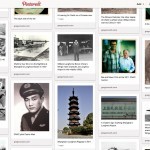 China’s Wings has a Pinterest board, too. Totally different flavor, but lots of excellent pictures of people, planes, and places in 1930s and 1940s China. (And some modern ones, too.)
China’s Wings has a Pinterest board, too. Totally different flavor, but lots of excellent pictures of people, planes, and places in 1930s and 1940s China. (And some modern ones, too.)
January 29, 2013
Enduring Patgonia pics 5 — A Fine Piece
A few Enduring Patagonia photos related to Jim and I making the first ascent of A Fine Piece on the West Pillar of Cerro Pollone… which was a damn fine climb….
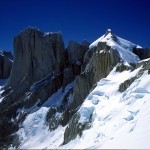

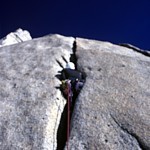
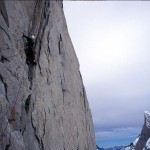


I’m also pleased with the story that Alison Osius at Rock & Ice just published about Athol Whimp. It’s nearly a year since he died. Both facets of which seem impossible. Since Athol’s passing, I’ve received requests from around the world for Right Mate, Let’s Get On With It, the partnership profile of Andrew and Athol I wrote back in 2004, and in honor of those requests, and of Athol, I’ve been prepping it for eRelease. It’s just about ready.
Here’s the post I wrote about Athol shortly after his death. The world is a lesser place without him in it. He was the best of us.
January 28, 2013
Photos of some of the airline’s Chinese personnel, late 1940s
Jason Chou, son of CNAC co-pilot Bing Zhou, passed along these photos.
After completing college in Kunming, Bing Zhou joined the China National Aviation Corporation in 1944, and he flew more than 130 Hump trips before the war ended. He stayed with the airline after the war, and when the Nationalist government of Chiang Kai-shek collapsed, he opted to stay on the mainland. In November, 1949, he piloted a C-47 north from Hong Kong into China. He worked in China’s domestic aviation industry, for CAAC, the Civil Aviation Administration of China, until he retired in 1987.
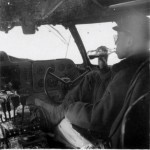
Capt Fred Chin, the left-most figure in the left-most photo above, lives in Shanghai today, and Jason Chou told me yesterday that he is coming to the United States in April for Moon Chin’s 100th birthday party. I hope I get to meet him.
There’s an excellent story about Bing Zhou and Dick Rossi on Bing Zhou’s page at cnac.org. As well as some nice photos.
And of course, Moon Chin is one of the main supporting characters in my book, China’s Wings, and one of the most amazing individuals I’ve ever met.
I’ve posted a lot about Moon in the last two and a half years. Here are some of my favorites:
How the SF Earthquake made Moon Chin a citizen, part I (of three, which are linked)
January 25, 2013
Good news from Patagonia, and more pics from Enduring Patagonia
I just saw the news on the Rock & Ice website that Kate Rutherford and Madaleine Sorkin have climbed the route Mate, y Porro, y Todo lo Demas on the north pillar of Fitzroy, in Patagonia. Well done! That’s a colossal feature.
In their honor, I’ll post a few photos of Fitzroy. (The north pillar is the immense flatiron leaning against the right side of Fitzroy in the first photo.)
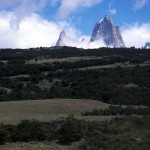


January 24, 2013
Charles and Anne Morrow Lindbergh with the plane they took to China
Here’s an interesting photo at the Smithsonian’s National Air & Space Museum’s website of Charles and Anne Morrow Lindbergh and the Sirius flying boat they used on their famous survey flight to China in 1931, the subject of Anne Morrow Lindbergh’s book North to the Orient.
Near the end of North to the Orient, Anne Morrow describes Charles’ efforts to survey the extent of the damage caused by the Yangtze River’s 1931 flood, which is possibly the most devastating natural disaster in human history, and is briefly described in China’s Wings (pp. 29-30). The Lindbergh’s efforts to mitigate some of the unbearable suffering of the flood survivors nearly ended in Charles’ demise. It’s an exciting episode in an enjoyable book.
North to the Orient is also one of the three books I discussed in the four-minute 3 Books episode Pioneers of the Sky I recorded for NPR’s All Things Considered last March.
January 23, 2013
Enduring Patagonia photos 3
And here comes another quartet of photos from my Enduring Patagonia years…
A minor epic in the Col of Patience
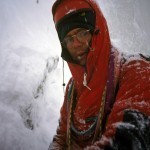
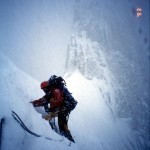
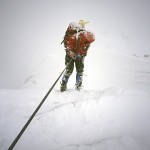
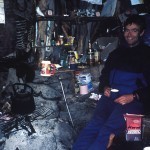
January 22, 2013
What it took to keep ‘em flying
Building on my post singing the praises of the airline’s mechanics and maintenance personnel, the undersung heroes of my book China’s Wings, here’s a little evidence to chronicle the massively complex logistics of keeping an airline flying.
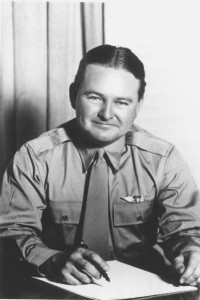
Chuck Sharp, CNAC Operations Manager
On September 30, 1943, Chuck Sharp, Operations Manager of the China National Aviation Corporation, wrote a letter to a Colonel Felton, in the US Army Service of Supply headquarters in New Delhi, discussing the airline’s operation and trying to solve what was, to Sharp, an outrageous Army-caused SNAFU – the US Army had impounded 420 tons worth of equipment consigned to the airline.
On that date, CNAC had 27 planes, and of those 27 planes, CNAC was keeping 20 constantly in the air. Twenty planes used 325,000 gallons of fuel per month, which had to be divided around the many airfields the airline used. Sharp’s letter discussed engine upgrades, spare parts, shop equipment, hand tools, airplane parts, engine parts from Pratt &Whitney, Wright, Hamilton Propellers, instruments, miscellaneous test equipment, radio ground transmitting stations, Bendix radio parts, and more.
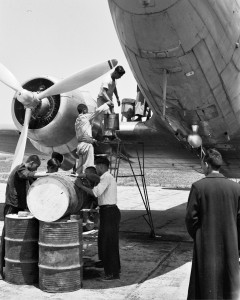
Hand fueling or adding oil to a CNAC DC-3 or C-47
The list of requisitioned aircraft and engine parts ran on for pages…. plugs, pins, bearings, guides, studs, rings, glides, manifolds, caps, pumps, screws, bolts, plungers, braces, locks, washers, nuts, pins, rivets, cotter pins, conduits, collars, wheels, gaskets, hoses, strainers, pulleys, tees, elbows, cables, autopilots, tanks, spacers, landing gear, rods, rubber packing, wire, panels, cylinders, bushings, carburetors, nipples, valves, radios, vibrator absorbers, shackle-releases, propellers, switches, relays, solenoids, grommets, lamps, rudders, doors, batteries, locks, lines, benches, starters, mounts, funnels, cans, grease, alcohol, governors, ammeters, shunts, lamps, cords, blades, thermos, benzene, rubber cement, graphite grease, enamel, acetone, dope, pumps, collars, aluminum, ignition cables, diaphragms, shafts, hubs, crankcases, adapters, impellers, pistons, valves, fuel cells, thermometers, sulphuric acid, magnetos, fairings, locknuts, lugnuts, and more…
On and on the list went… on it was everything necessary for DC-3 type engines, instruments, and airframes, and then the list ran to various shop equipment, food, office sundries, canteen supplies, including eight ¾ ton carryall vehicles, eight 4×4 command cars, twelve 1½ ton trucks, a pair of 2 ½ ton 6×6 tanker trucks, and a dozen jeeps.
In all, the equipment on order was valued at $446,099.63 U.S. dollars (worth more than $5 million modern dollars) and it weighed 420 tons. The Army had impounded the shipment when it arrived in India.
Arthur N. Young, a member of CNAC’s board of directors, had to fly to Dehli to get it released to the company.
The parts list: Sharp to Colonel Felton, September 30, 1943
The Army-impounded shipment and efforts to release it: Arthur N. Young to His Excellency H.H. Kung, September 21, 1943.
Both documents in the Young Papers at the Hoover Institute.
January 21, 2013
Credit to the CNAC mechanics & maintenance team
I was excited to have Eric Ludwig, grandson of CNAC pilot Sam Belieff, comment on last week’s post about CNAC No. 100, the plane so painstakingly restored by the Historic Flight Foundation in Washington.
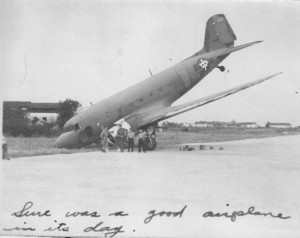
The mechanics had it flying again the next day…
In his comment, Eric mentioned that his grandfather told him that the CNAC mechanics had the plane flying again the next day. (The one in the photo to the right.) And although historically, the pilots of the China National Aviation Corporation have garnered the lion’s share of the glory for the airline’s success (as they have in my book, China’s Wings), I feel I ought to acknowledge the miracles worked for twenty years by CNAC’s teams of mechanics and maintenance experts. They labored in difficult and uncomfortable environment conditions in China, Burma, and India, and they always dealt with chronic shortages of supplies and spare parts. Quite simply, none the airline’s astonishing accomplishments would have happened without their talents, expertise, and dedication to duty.
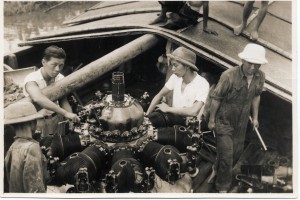
Mechanics salvaging one of the Kweilin’s engines
Some of my favorite CNAC stories hinge on the accomplishments of the mechanics, and not all of them made it into the final draft of China’s Wings: salvaging and restoring the Kweilin, the plane in which Hugh Woods was shot down by the Japanese in August, 1938, renaming it and returning it to service only to have it shot down by the Japanese AGAIN, in October, 1940 (pp. 155-171); Chuck Sharp, Zigmund Soldinski, and The Flying Sieve (pp. 265-267); Bond and Ernie Allison flying a Consolidated Commodore with unmatched engines (which isn’t in China’s Wings, but can be found here); mechanic Troy Heine threatening a gang of coolie laborers tearing up a railroad track ahead of the advancing Japanese when Heine needed it to evacuate a dismantled airplane; and, of course, the absolutely classic story of the DC-2 1/2… (pp. 228-231)
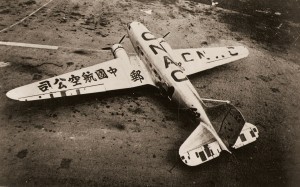
The DC-2 1/2
Coming soon, I’ll post a list of spare parts requisitioned by the airline in 1943 to give some idea of what it took to keep the airplanes flying during its years on the Hump, and I’ll see if I can find the Troy Heine story in one of my old drafts…

